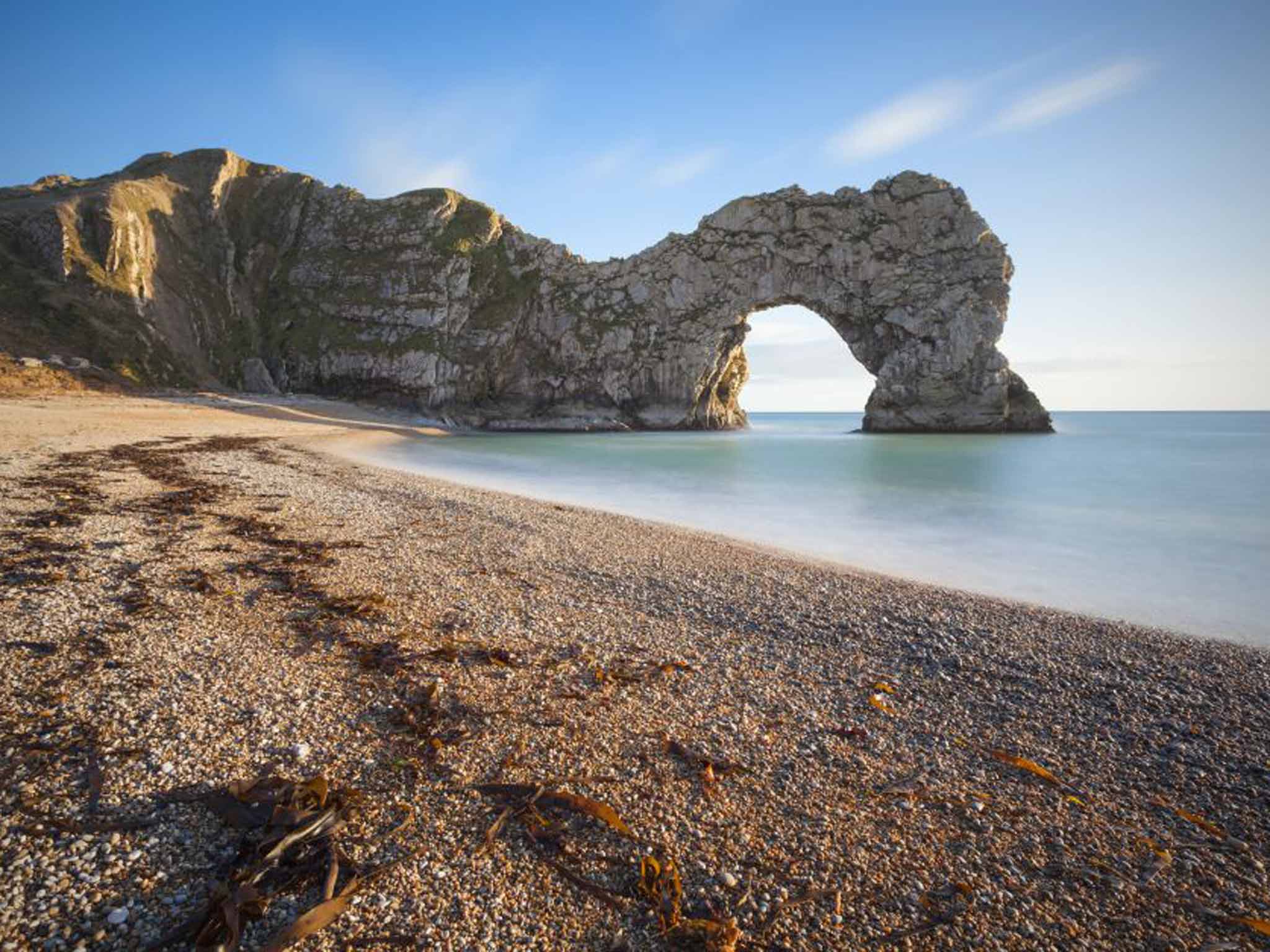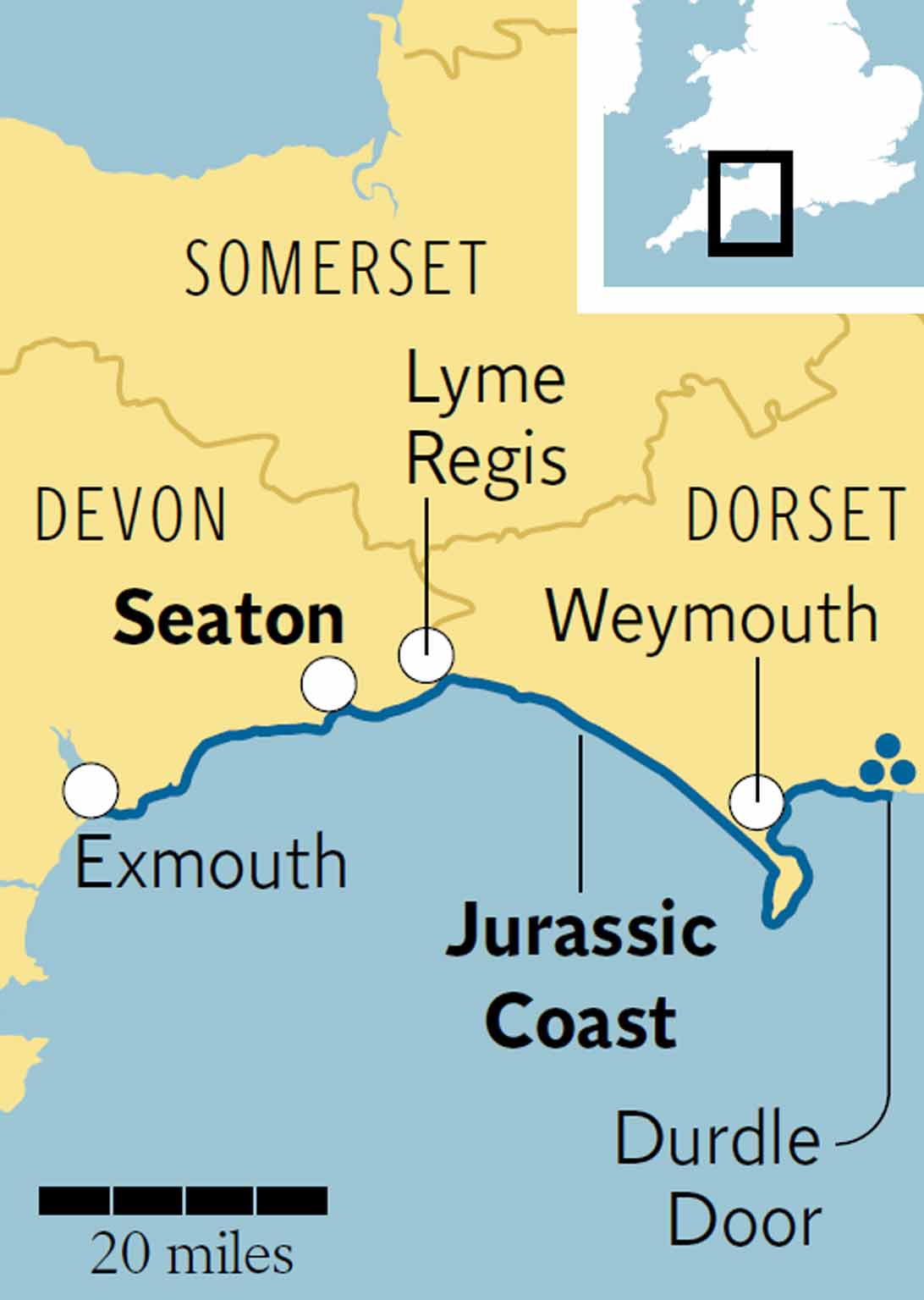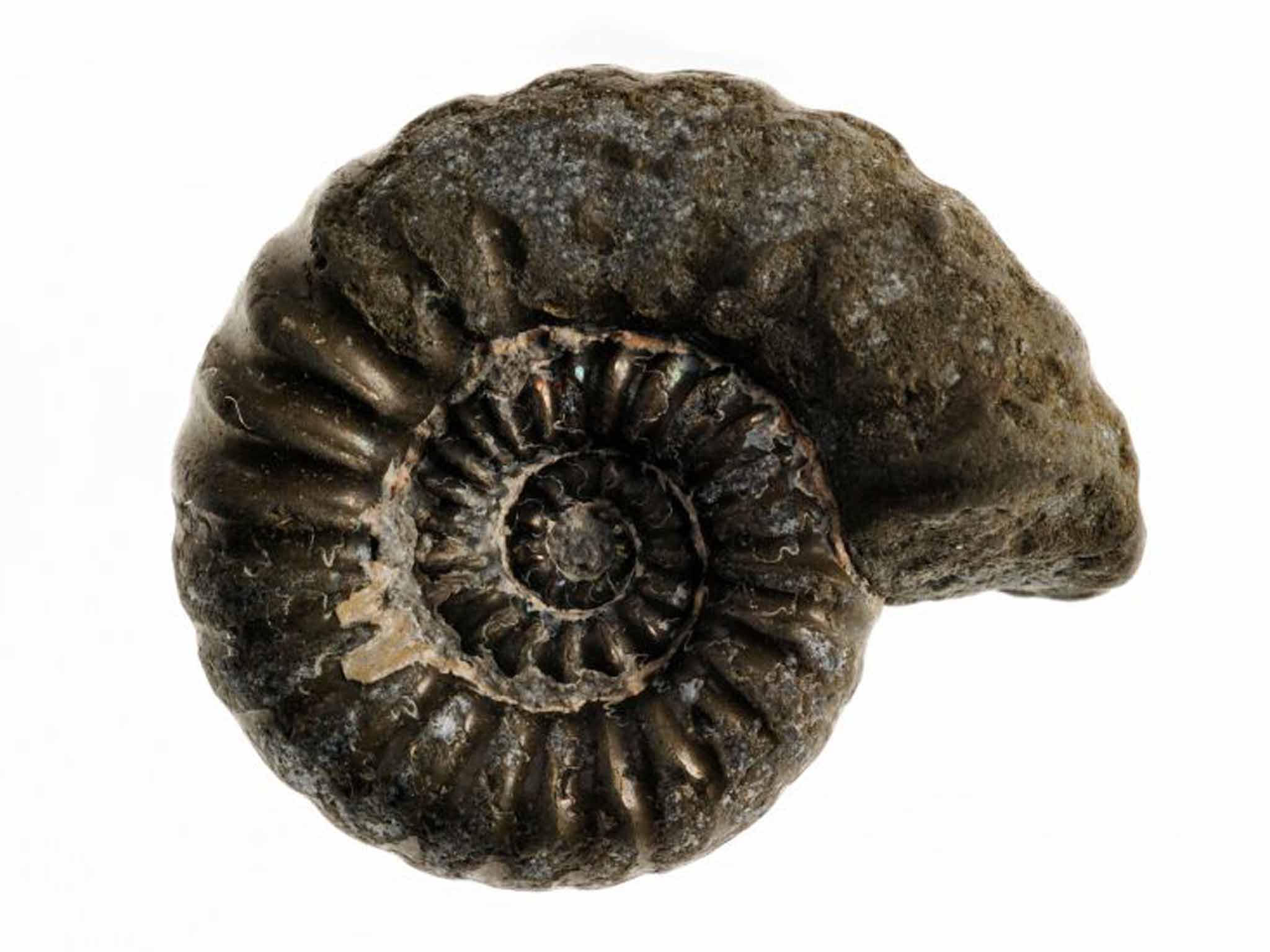Seaton Jurassic is the new attraction at Devon's dinosaur-rich World Heritage site
Visitor centres and museums explain geology along the coast. Hilary Bradt goes time travelling.

Your support helps us to tell the story
From reproductive rights to climate change to Big Tech, The Independent is on the ground when the story is developing. Whether it's investigating the financials of Elon Musk's pro-Trump PAC or producing our latest documentary, 'The A Word', which shines a light on the American women fighting for reproductive rights, we know how important it is to parse out the facts from the messaging.
At such a critical moment in US history, we need reporters on the ground. Your donation allows us to keep sending journalists to speak to both sides of the story.
The Independent is trusted by Americans across the entire political spectrum. And unlike many other quality news outlets, we choose not to lock Americans out of our reporting and analysis with paywalls. We believe quality journalism should be available to everyone, paid for by those who can afford it.
Your support makes all the difference.'To hold a fossil in your hand is to be offered the gift of time travel and a clue to the mysteries of life.“ This quote, attributed to ”TT“, is stitched into a sampler near the entrance to Seaton Jurassic,which opens its doors for the first time on Saturday 26 March.
Ever since Unesco awarded World Heritage Site status to this 95-mile stretch of East Devon and Dorset coast, different places have competed to be its “Gateway”. Exmouth, at the extreme western – and oldest – end, has the Geoneedle where you can play Jurassic hopscotch, while Lyme Regis, the youngest section, has ammonites galore scattered tantalisingly along its shore. The eastern end is marked by Old Harry Rocks, starkly white chalk sea stacks, and the much-photographed natural arch of Durdle Door.
Throughout the coast's length are visitor centres and museums explaining the geology and proudly displaying their fossils. The most impressive of all, the skull of a pliosaur, “the world's biggest bite”, is in the Dorset County Museum in Dorchester. It's nearly two and-a-half metres long, which gives a clue to the reptile's full size: around 18 metres. Probably our most fearsome marine predator ever, its four powerful flippers allowed it to speed through the water in pursuit of prey some 155 million years ago.

One thing you'll learn from the many interpretation boards is that the Jurassic Coast is all about colour: notably, red, white and blue(ish). The cliffs reveal their age at a glance. Red is Triassic, mind-numbingly old at 250 million years, when southern England was a tropical desert close to the equator and part of the super-continent of Pangaea. This era gave way to Jurassic, as tectonic plates collided and Pangaea started to break up. Devon and Dorset slipped beneath the ocean and marine reptiles rapidly evolved in a world very much to their liking with plenty to eat, including each other. When they died their bones fossilised in the blue-grey mud and silt. Finally the Cretaceous era, 145 million years ago, brought us the white chalk cliffs consisting of millions of tiny sea creatures, heaved up and tilted by ever-advancing tectonic plates. Until: bang! A meteor hit Earth, calling time on dinosaurs and the Cretaceous.
The Jurassic Coast displays the most complete record anywhere in the world of the 185 million years of the Earth's history that we call the Mesozoic era. So, back to Seaton. This is the only town along the coast where you can see all three Mesozoic components in one place. Look west, and the chalk cliffs of Beer (Cretaceous) reflect their whiteness in the sea; then slabs of interloping red Triassic provide a backdrop to the beach; and finally there's some grey Jurassic by the Undercliff and the Great Bindon landslide which plays a major role in the new Seaton Jurassic centre. Forget dinosaurs; the centre celebrates and explains the story of life, in an imaginative and fascinating way. It's the prehistoric marine and flying reptiles that left their remains in this region, and the Bindon landslide of Christmas Day 1839 put Seaton at the centre of geological research and discovery.

TT, the author of the fossil quote, is Time Traveller, who guides the visitor through the new centre. There’s no solemn explanation of the wonders of the natural world, but interactive displays. There are drawers and books to open, buttons to press, knobs to twiddle. You can even row TT's time machine and view the marine world outside the portholes. At the end of Cretaceous there is nothing but water and sand. That's what mass extinction looks like.
Are you as strong as a starfish? Squeeze this handle and find out. Or as clever as a cuttlefish? Dress in a camouflage cloak and see. Would you be predator or prey if shrunk to the size of a limpet? Put it to the test. The Timeline Corridor leads from the first building blocks of life itself, a billion years ago, to homo sapiens, and explains some of the subtleties of evolution. Look at the skeleton of a dolphin compared with an ichthyosaur: one a mammal, one a reptile, millions of years apart, but so similar. That's convergent evolution. And look at a human arm and a dolphin's flipper: same bones, different size and uses: divergent evolution.
Come soon, before the crowds catch on, and, if you bring children, be warned. Afterwards they will want to show off their new knowledge exhaustingly. As might you, come to that.
Hilary Bradt is co-author of 'Slow Travel: East Devon & the Jurassic Coast' (Bradt Guides, £12.99)
Getting there and around
Axminster, the closest station to Seaton, is served by South West Trains (08457 484950; nationalrail.co.uk). A fit walker can do the 95 miles of Jurassic Coast in a week. Coastal cruises go from Exmouth, Lyme Regis, and Weymouth, so you can view the cliffs from the ocean, with an expert commentary.
The Jurassic Coaster bus runs from Exeter to Poole once a day (bit.ly/JurassicCoaster).
Visiting there
Seaton Jurassic (01297 300 390; seatonjurassic.org). Open daily 10am-5pm, admission £8 adults, £5 children, valid for a year. Lyme Regis Museum (01297 443370; lymeregismuseum.co.uk) and Charmouth Heritage Coast Centre (01297 560772; charmouth.org) have fossil displays and hold fossil walks.
Staying there
The Fairwater Head Hotel provides comfortable accommodation in a country house with access to all the Jurassic Coast (01297 678 349; fair waterheadhotel.co.uk). Doubles from £104 including breakfast.
More information
Join our commenting forum
Join thought-provoking conversations, follow other Independent readers and see their replies
Comments